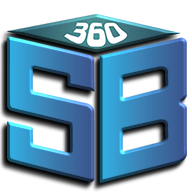The Basics of Information Technology:
In this introductory post, we will dive into the fundamentals of Information Technology, explaining its definition, components, and various subfields. From hardware and software to networks and databases, we will demystify the key elements that make up the IT infrastructure.
Exploring Emerging Technologies:
IT is a rapidly advancing field, constantly introducing groundbreaking technologies. In this section, we will explore emerging technologies such as artificial intelligence, blockchain, virtual reality, and the Internet of Things (IoT). Discover how these innovations are reshaping industries, enhancing efficiency, and revolutionizing the way we live.
Cybersecurity:
Protecting the Digital Fortress: With the increasing reliance on technology, the need for robust cybersecurity measures has never been more critical. In this segment, we will discuss the importance of cybersecurity, explore common threats, and delve into preventive measures such as encryption, firewalls, and best practices for online safety.
The Role of Big Data and Analytics:
In today’s data-driven world, harnessing the power of big data and analytics has become crucial for businesses and organizations. We will delve into the realm of data science, exploring concepts such as data mining, predictive analytics, and machine learning. Learn how organizations leverage data insights to drive informed decision-making and gain a competitive edge.
Cloud Computing:
Revolutionizing IT Infrastructure: Cloud computing has revolutionized the way businesses store, process, and access data. This section will focus on cloud computing models (public, private, and hybrid), benefits, and challenges. We will also explore cloud service providers, discuss security considerations, and highlight real-world examples of cloud adoption.
Software Development and Agile Methodologies:
Software development is at the core of IT, and agile methodologies have gained popularity due to their iterative and customer centric approach. Explore the software development lifecycle, agile methodologies (such as Scrum and Kanban), DevOps practices, and tools used by developers to streamline the software development process.
The Future of IT:
In this final segment, we will delve into futuristic technologies and trends shaping the future of IT. From quantum computing and edge computing to automation and the impact of AI, we will discuss the potential implications of these advancements and how they may reshape industries and society as a whole.
Conclusion:
Information Technology continues to be a driving force behind innovation, transforming the way we live and work. By staying informed and up-to-date with the latest IT trends and developments, you can navigate this dynamic landscape with confidence. Join us on this exciting journey as we unravel the wonders of Information Technology and explore the limitless possibilities it holds for the future.










